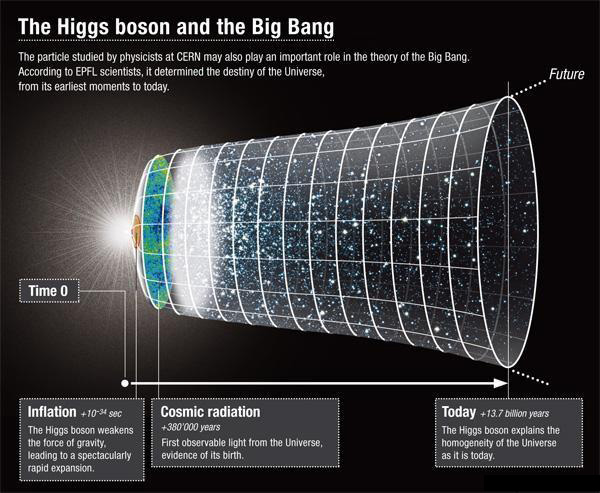
Little more than a year later, the discovery garnered a Nobel Prize for two of the scientists who developed the theory behind the Higgs boson, François Englert and Peter Higgs - for whom the particle is named. Even oddball minutiae made it into the press, with a few articles analyzing the physicists’ use of the often-scorned font Comic Sans in their presentation. About half a million people tuned in to watch the livestreamed announcement, and footage from the event appeared on more than 5,000 news programs. The Higgs boson discovery dominated headlines around the globe. Without the Higgs boson, then, one of scientists’ most successful theories would collapse. If electrons were massless, for example, atoms wouldn’t form. And the mass of those particles is key to their behavior. The particles serve as building blocks of atoms and transmit crucial forces of nature, such as electromagnetism. Those particles and interactions are behind just about everything we know.

That theory explains the known elementary particles and their interactions. The particle’s discovery filled in the missing keystone of the standard model of particle physics. In 2010, the LHC began smashing protons together at extremely high energies, while two large experiments, ATLAS and CMS, used massive detectors to look through the debris. But finding the particle had to wait for CERN’s Large Hadron Collider, or LHC. Scientists predicted the existence of the Higgs boson back in 1964, as a hallmark of the process that gives elementary particles mass. Since then, he and thousands of other physicists from around the world working on CERN experiments have gone all out exploring the particle’s properties. “It was a very exciting time to be getting immersed into that world,” he says. Instead, he says, he found himself in the basement, in an overflow room of an overflow room.īut the enthusiasm was still palpable. That space was for VIPs - and those determined enough to wait in line all night to snag a seat.

As buzzing throngs of physicists crowded together to watch the announcement at CERN, Duarte didn’t make it to the main auditorium.

“I was physically there maybe a week before the announcement,” Duarte says. Duarte was an eager graduate student who’d just arrived at CERN. On July 4, 2012, scientists at the laboratory CERN near Geneva announced the discovery of the Higgs boson, the long-sought subatomic particle that reveals the origins of mass. Javier Duarte kicked off his scientific career by witnessing the biggest particle physics event in decades.


 0 kommentar(er)
0 kommentar(er)
